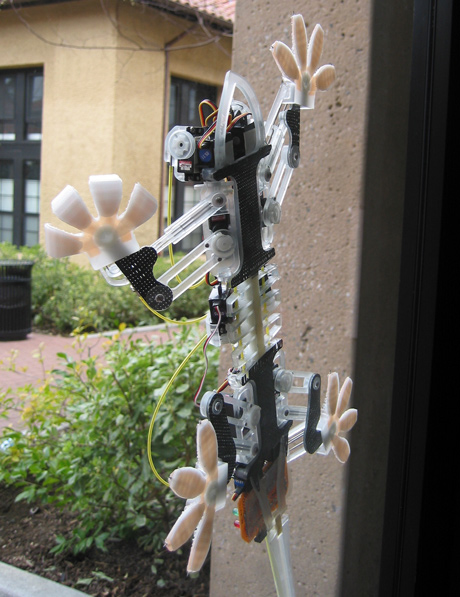Posted on November 23rd, 2010 by axb


How do cats drink? Is the “wet dog shake” an effective drying mechanism? These may have fleetingly crossed your mind, but it took an engineer to get to the bottom of such creature curiosities.
The ability of felines to lap up an entire bowl of liquid may seem to defy gravity. But four engineers at MIT, Virginia Polytechnic Institute, and Princeton have proven that it’s not so. Their study was inspired by observing one of their cats, Cutta Cutta.
The team used high-speed photography to capture and analyze the mysterious cat lap’s fluid dynamics. Since a cat’s tongue is not large enough to create a ladle that can “scoop” water into its mouth, kitties lightly touch the tip of their tongue to the surface of the water, and then quickly dart it back, drawing a column of liquid into their mouths.
Read More
Filed under: e-News, Explore Engineering, Mechanical | 4 Comments »
Tags: Biomimicry, Mechanical
Posted on October 25th, 2010 by axb

When it comes to design, engineers have a lot to learn from nature and its diverse forms of life. That’s why John Dabiri, a bioengineer and recipient of a 2010 MacArthur Genius Grant, has turned his eye to a strange and surprisingly complex creature: the jellyfish.
Known as the “jellyfish engineer,” Dabiri uses physics, mathematics, and statistical modelling to better understand the locomotion of these fascinating animals.
Read More
Filed under: e-News, Explore Engineering, Mechanical, Ocean, Trailblazers | 5 Comments »
Tags: Biomimicry, Mechanical, Ocean
Posted on August 31st, 2010 by jxh

Has life got you climbing up the walls? Well, soon you may be able to do it for real – and as well as a gecko.
Geckos are able to stick to walls thanks to a technique called dry adhesion. Each toe of a gecko’s foot contains hundreds of flap-like ridges, and each ridge has millions of hairs.
The tiny hairs are 10 times thinner than a human’s and each one divides into even smaller strands called spatulae. These split ends interact with the molecules of the climbing surface using the van der Waals force, and stick to it when pulled in one direction. If pulled in a different direction, however, the adhesive comes right off.
Now, Stanford University mechanical engineers have created a robot that will replicate a gecko’s sticky foot in order to climb walls.
Read More
Filed under: e-News, Mechanical | Comments Off on Stickybot to the Rescue
Tags: Biomimicry, Mechanical, Robotics
Posted on August 15th, 2010 by jxh

Biomimicry is back again, and this time butterflies are the source of imitation.
The Morpho butterfly possesses acute chemical-sensing abilities thanks to nano-level structures underneath the colorful scales on its wings.
The submicroscopic structures can pick up even the smallest trace of airborne chemicals and the exposure changes the spectral reflectivity of the butterfly’s wings.
Read More
Filed under: Chemical, e-News, Materials | 2 Comments »
Tags: Biomimicry, Chemical, Defense, Materials, Nanotechnology
Posted on August 4th, 2010 by jxh
 When you see a spider, your first inclination may be to step on it, or scream and run away.
When you see a spider, your first inclination may be to step on it, or scream and run away.
But engineers would do the opposite, as they are trying to unlock one of nature’s greatest mysteries: a spider’s ability to produce silk.
Read More
Filed under: Biomedical, Chemical, e-News, Environmental, Materials | 1 Comment »
Tags: Biomedical, Biomimicry, Chemical, Materials














 When you see a spider, your first inclination may be to step on it, or scream and run away.
When you see a spider, your first inclination may be to step on it, or scream and run away.